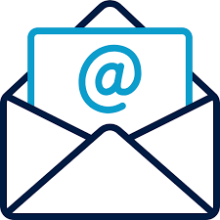Email segmentation is a great way to improve the effectiveness of your email campaigns. As a marketer, your job is to guide your leads further down the sales funnel, nurturing them each step of the way. But the issue that many marketers face is understanding how to categorize leads and customers. Not all current and potential customers are the same. Through segmentation, you can nurture different segments of your market.
Market segmentation is the process of dividing a broad customer base into smaller groups. Before you begin segmenting, be sure you understand different segments of your market to ensure you’re segmenting accurately. Many businesses use macro research to gain a high-level overview of what their market looks like, and begin to segment from there. No matter what your business size is, you can benefit from market research early on. According to a report from the DMA found that 77% of email ROI came from highly targeted, segmented campaigns. With that in mind, here are five ways you can start segmenting your email campaigns:
Basic Demographics
One of the most popular ways that marketers begin to segment their campaigns is by analyzing basic demographics. This includes age, location, gender, and income level. This is information you may have collected during your opt-in form or over time through your customer relationship management platform. For example, as a clothing retailer, gender would be an important demographic for you to know.
If you don’t already collect this type of information in your sign-up form, now is the time to start doing it. Take a look at your current lead generation efforts and opt-in forms and re-design them to collect information that’s pertinent to you. While a clothing company might care about gender or age, a B2B company might care about the size a company. A great way to encourage people to submit their info is to offer free downloads. For instance, CoSchedule offers sample press release templates for free upon signing up with a company email.
Behavioral Data
Behavioral data is based on the information collected about a person’s trackable actions; i.e, the websites they visit, apps they download, etc. For example, tools like BeamPulse allow you to keep track of the icons, pages, and products that any visitor clicks on. You can then segment your emails to target people who have visited specific pages, watched certain videos, etc.
Email Engagement
Email engagement is a metric that comes with the vast majority of popular email marketing platforms, like MailChimp or Constant Contact. And it’s an easy way to segment your lists. Within your chosen platform, you can easily sort your market by open rates—those with high open rates, so-so open rates, and low open rates. This way, you can prioritize the type of content you send them. High open rates might receive VIP emails, so-so open rates might require emails with a little more nurturing, while low open rates likely need some more incentivizing.
Previous Purchases
Taking a look at previous purchases is an excellent way to target specific groups of people within your market. To do this, you’ll need to have purchase tracking integrated into your ecommerce platform and email platforms. There are also some plugins that handle this for you. The idea is that you want to be able to target people based on what they have already proven to enjoy. For instance, if a customer purchases candles on your site, you might want to notify them when you have new candle products in your lineup.
Send a Survey
When it comes to collecting data on your consumers for segmentation, a survey is an effective way to do it. This might be ideal if you already have a decent subscriber base, but haven’t collected any information on them when they originally signed up. A survey gives you the chance to do this. Be sure to incentivize people to participate in the survey by offering discount codes, contest entry, or other perks. As you build your quiz, be sure to include questions that offer deeper insight into who your customers are—from their basic demographics to their preferences and hobbies.
This is an article provided by our partners network. It does not reflect the views or opinions of our editorial team and management.
Sponsored content

Founder Dinis Guarda
IntelligentHQ Your New Business Network.
IntelligentHQ is a Business network and an expert source for finance, capital markets and intelligence for thousands of global business professionals, startups, and companies.
We exist at the point of intersection between technology, social media, finance and innovation.
IntelligentHQ leverages innovation and scale of social digital technology, analytics, news, and distribution to create an unparalleled, full digital medium and social business networks spectrum.
IntelligentHQ is working hard, to become a trusted, and indispensable source of business news and analytics, within financial services and its associated supply chains and ecosystems













